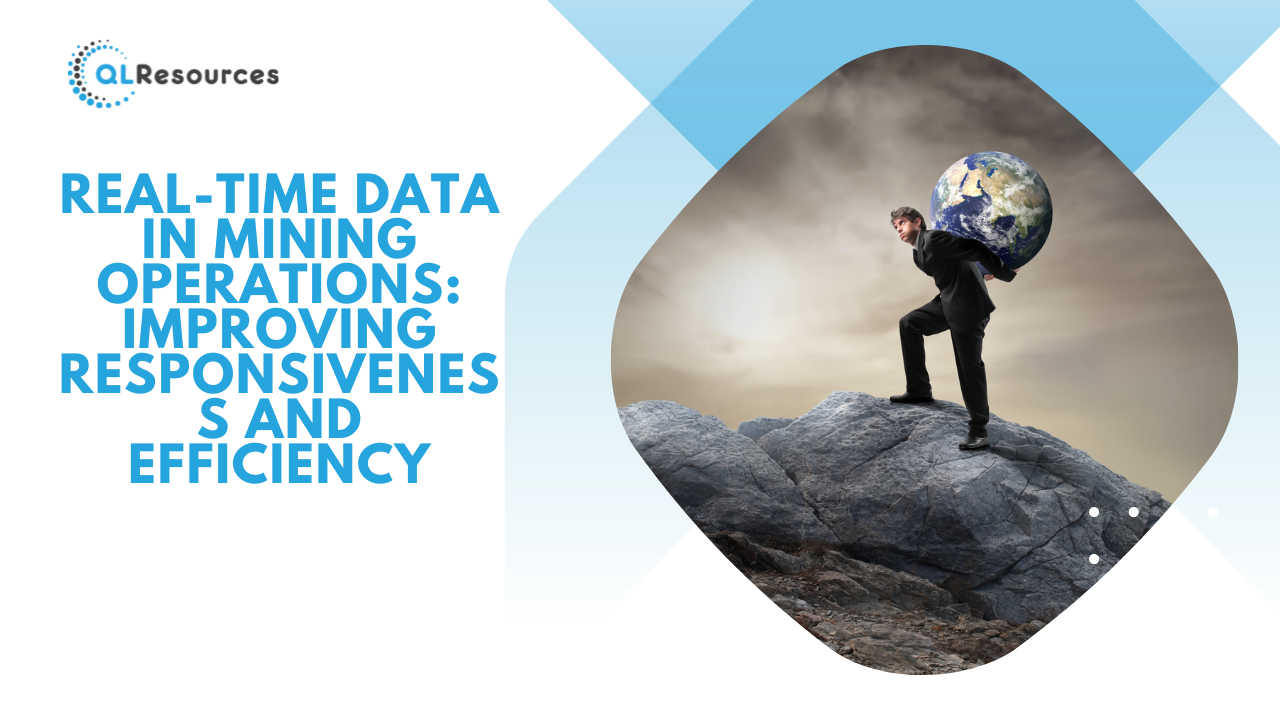
In the dynamic and complex environment of mining operations, the integration of real-time data has become a transformative force. The ability to collect, process, and analyse data in real time empowers mining companies to make informed decisions, enhance safety, and optimise efficiency. In this blog, we will explore the significant impact of real-time data in mining operations and how it contributes to improved responsiveness and efficiency.
Real-Time Data Sources in Mining Operations
1. Sensor Technologies:
Sensor technologies, including IoT (Internet of Things) devices, are deployed throughout mining operations to capture real-time data on various parameters. This includes data from equipment sensors, wearables worn by workers, environmental sensors, and more.
2. Telemetry Systems:
Telemetry systems enable the remote monitoring of equipment and assets. They provide real-time information on the status, performance, and location of vehicles, machinery, and other critical assets.
3. Automation and Control Systems:
Automated systems and control systems generate real-time data on the operation of machinery and processes. This includes data on production rates, energy consumption, and equipment health.
4. Geospatial Technologies:
Geospatial technologies, such as GPS and GIS (Geographic Information System), provide real-time location-based data. This is particularly valuable for tracking the movement of vehicles, managing haulage routes, and monitoring the overall spatial dynamics of the mining site.
5. Communication Networks:
High-speed communication networks facilitate the real-time transfer of data from remote mining sites to centralised control centers. This enables seamless monitoring and decision-making.
Benefits of Real-Time Data in Mining Operations
1. Improved Safety:
Real-time data enables the continuous monitoring of environmental conditions, equipment health, and worker activities. In the event of safety concerns or emergencies, immediate actions can be taken to mitigate risks and ensure the well-being of personnel.
2. Optimised Equipment Performance:
Monitoring equipment in real time allows for the early detection of issues or anomalies. Predictive maintenance strategies can be employed, reducing downtime and extending the lifespan of machinery.
3. Enhanced Productivity:
Real-time data provides insights into production rates, workflow bottlenecks, and resource utilisation. This information is crucial for optimising processes, reducing inefficiencies, and maximising overall productivity.
4. Efficient Resource Allocation:
The ability to monitor and analyse real-time data helps in allocating resources such as personnel, equipment, and energy more efficiently. This ensures that resources are deployed where they are needed most.
5. Timely Decision-Making:
Rapid access to real-time data empowers decision-makers to respond quickly to changing conditions or unexpected events. This agility is essential for adapting to operational challenges and capitalising on opportunities.
6. Environmental Monitoring and Compliance:
Real-time data on environmental conditions, emissions, and waste management allows mining companies to ensure compliance with environmental regulations. It also supports sustainable and responsible mining practices.
7. Supply Chain Optimisation:
Real-time data extends beyond the mining site to include logistics and supply chain operations. Tracking the movement of materials, managing inventories, and optimising transportation routes contribute to a more efficient supply chain.
Challenges and Considerations
1. Data Security:
The increased reliance on real-time data necessitates robust cybersecurity measures to protect sensitive information and prevent unauthorised access.
2. Data Integration:
Mining operations generate vast amounts of data from diverse sources. Integrating and harmonising this data for meaningful analysis can be challenging and requires advanced data management systems.
3. Training and Skill Development:
The effective utilisation of real-time data requires a workforce with the necessary skills in data analysis, interpretation, and decision-making. Ongoing training and skill development are essential.
4. Infrastructure and Connectivity:
Remote mining sites may face challenges in terms of connectivity and infrastructure. Ensuring a reliable network and data infrastructure is crucial for the successful implementation of real-time data solutions.
Future Trends and Technologies
1. Edge Computing:
Edge computing, where data is processed closer to the source rather than relying on centralised cloud services, is gaining traction in mining. This reduces latency and enables faster decision-making.
2. Artificial Intelligence and Machine Learning:
The integration of AI and machine learning algorithms enhances the analysis of real-time data, providing predictive insights and optimising operational strategies.
3. Blockchain Technology:
Blockchain technology is being explored for enhancing the security, transparency, and traceability of data in mining operations, particularly in supply chain management and mineral traceability.
4. Advanced Analytics:
Advanced analytics tools, including data visualisation and predictive analytics, are becoming integral for extracting actionable insights from real-time data.
Conclusion
Real-time data has become a game-changer in mining operations, offering a myriad of benefits ranging from improved safety to enhanced productivity and efficient resource management. As technology continues to advance, mining companies will increasingly leverage real-time data solutions and embrace innovative technologies to drive efficiency, sustainability, and competitiveness in the industry.